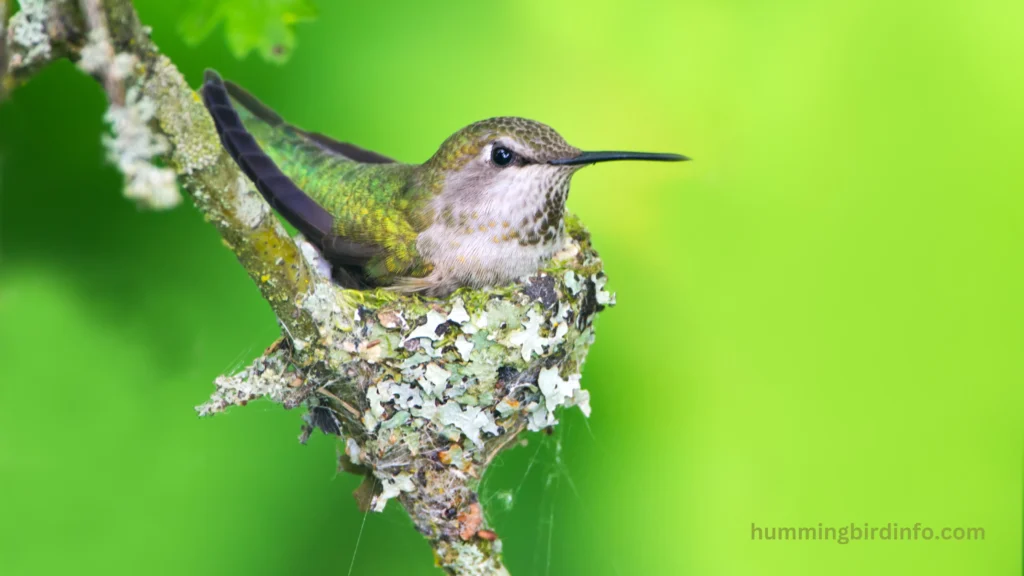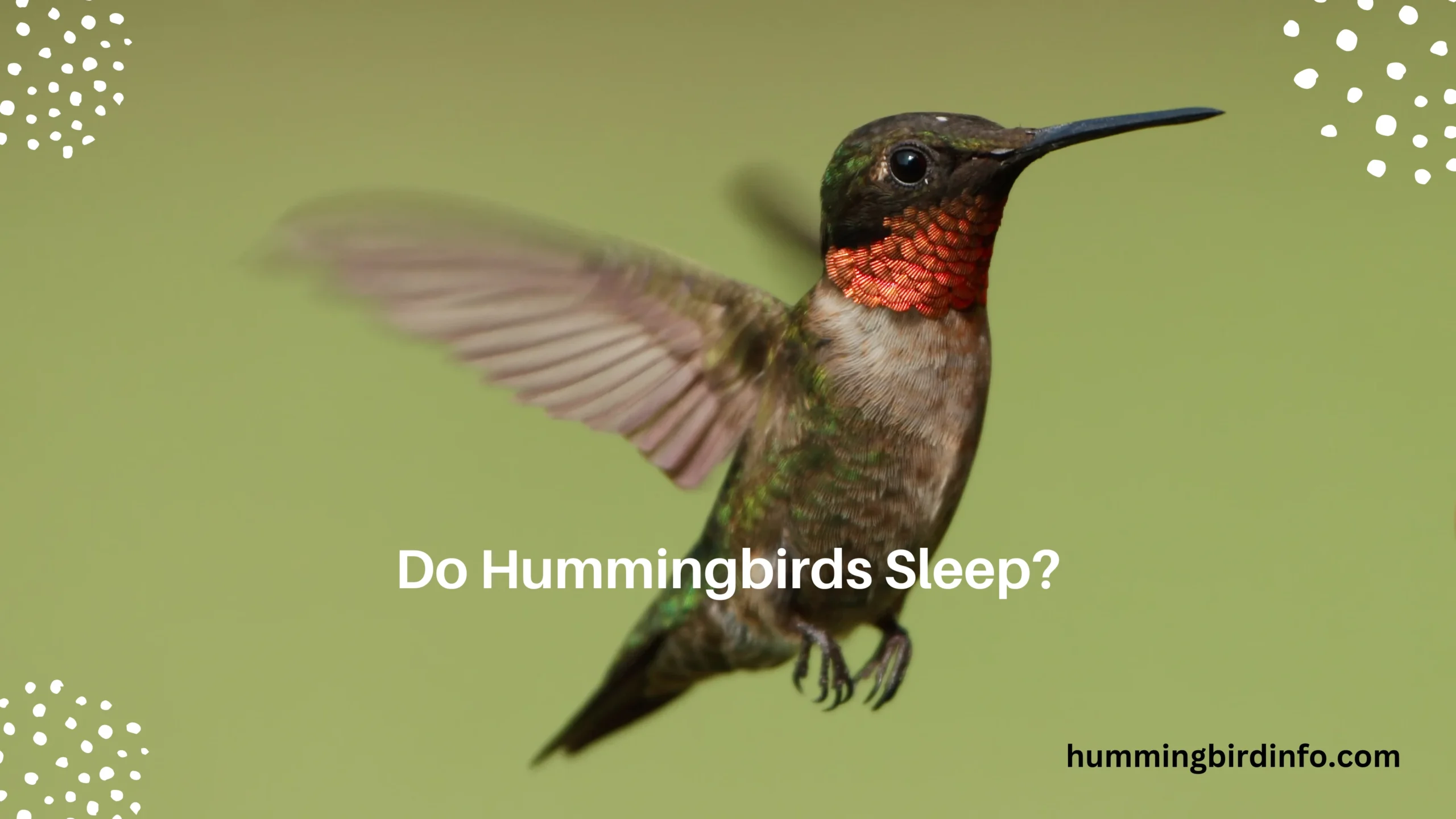Hummingbirds are tiny energy machines. These birds flap their wings up to 80 times per second, have a heartbeat that can exceed 1,200 beats per minute, and must eat constantly to survive. With such a high-powered lifestyle, it seems almost impossible that they ever slow down.
But even these little dynamos need rest. This brings up a fascinating question — do hummingbirds sleep like other birds, or is there something different going on? Can they actually afford to “switch off,” even for a moment?
Surprisingly, hummingbirds have a unique way of conserving energy through a process called torpor — a sleep-like state that helps them survive extreme conditions and energy shortages. In this article, we’ll explore what torpor is, how it works, and why it’s crucial for hummingbird survival.
Contents
Understanding Torpor in Hummingbirds
Torpor is a state of deep physiological rest, where the bird’s body temperature, heart rate, and metabolism drop dramatically. It’s far more intense than ordinary sleep and is used to save energy when food is scarce or temperatures are cold.
Unlike normal sleep, torpor involves a massive shutdown of bodily systems. During regular sleep, brain activity continues, and animals can respond quickly to threats. But during torpor, a hummingbird becomes almost completely unresponsive.
In torpor, a hummingbird’s body temperature can fall to nearly the ambient level, sometimes dropping to 50°F (10°C). Its heart rate slows from over 1,000 beats per minute to just a few dozen. Even breathing becomes irregular and extremely slow.
Its metabolic rate is reduced by up to 95%, allowing it to survive long, cold nights without eating. This is essential, as hummingbirds cannot store enough fat to last more than a few hours when awake.
Torpor usually lasts for several hours overnight, but the exact duration can vary. Some hummingbirds even enter short bouts of torpor during the day if conditions demand it.
The Benefits and Drawbacks of Torpor
The biggest benefit of torpor is energy conservation. When nectar is unavailable and nights are cold, torpor allows hummingbirds to avoid starvation by minimizing energy use.
Torpor helps hummingbirds survive extreme conditions, especially in high-altitude or temperate areas where food is scarce at night. It’s literally a lifesaver for these birds.
However, torpor comes with risks. A bird in torpor is almost defenseless — it can’t fly or react quickly to threats. This makes it vulnerable to predators like owls or snakes.
Another drawback is the slow recovery from torpor. Waking up can take 20–60 minutes, and during this time, the bird is still sluggish and exposed to danger.
There may also be physiological costs, though scientists are still studying the long-term effects of repeated torpor. The trade-off between survival and safety is a delicate balance for hummingbirds.
When, Where, and How Hummingbirds Enter Torpor
Most hummingbirds enter daily torpor, especially at night. Their high metabolism means they cannot fast for long, so torpor is the only way to survive the overnight fast.
Nocturnal torpor is common when temperatures drop or when food is hard to find. Cold nights or cloudy days with low flower availability often trigger it.
Hummingbirds typically choose secluded branches, tree hollows, or sheltered spots to enter torpor. They may even cling to feeders, becoming still as their body shuts down.

The process of entering torpor involves a gradual reduction in body temperature and heart rate. They may fluff up their feathers to trap heat as their systems slow.
To wake up, the bird must generate heat internally. It shivers to create muscle warmth, slowly restoring its normal temperature, heart rate, and breathing.
Factors Influencing Torpor
Temperature is a major trigger. When the air gets cold, especially below 50°F (10°C), hummingbirds are much more likely to use torpor to survive the night.
Food availability is another key factor. If they can’t find enough nectar or insects during the day, hummingbirds rely on torpor to avoid burning through reserves.
Not all species use torpor the same way. Smaller hummingbirds, like the Calliope Hummingbird, are more prone to use torpor than larger species that store more fat.
Seasonal variations also influence torpor. During migration or in colder months, hummingbirds are more likely to enter torpor to deal with long flights or low resources.
Even among the same species, there can be individual variation. Some birds might enter torpor regularly, while others manage to stay awake depending on their territory or health.
Conclusion
Hummingbirds may seem like they never rest, but the truth is, they have a remarkable way to cope with exhaustion. Through torpor, they essentially pause their body’s activity, conserving vital energy through the night.
This unique state allows them to survive harsh environments, thrive with minimal food, and manage their extreme lifestyle. It’s not sleep in the usual sense, but it’s a powerful tool of survival.
Understanding hummingbird torpor deepens our appreciation for these amazing creatures. It also highlights why habitat preservation and climate awareness are so important for their continued survival.
FAQs
1. Do hummingbirds sleep like other birds?
No, hummingbirds enter a special state called torpor, which is much deeper than regular sleep and helps them conserve energy.
2. How often do hummingbirds enter torpor?
Many hummingbirds use daily torpor, especially at night, when temperatures drop and food is scarce.
3. How long can hummingbirds stay in torpor?
They usually stay in torpor for 6 to 12 hours, depending on conditions like temperature and food supply.
4. Is torpor dangerous for hummingbirds?
Yes, during torpor, they are vulnerable to predators and take time to wake up, which can increase risk.
5. Where do hummingbirds go to enter torpor?
They perch on branches, twigs, or feeders in sheltered spots where they are safe from wind and rain.
6. Do baby hummingbirds use torpor?
Not usually. Nestlings rely on warmth from their parents and don’t typically use torpor until they’re older.








